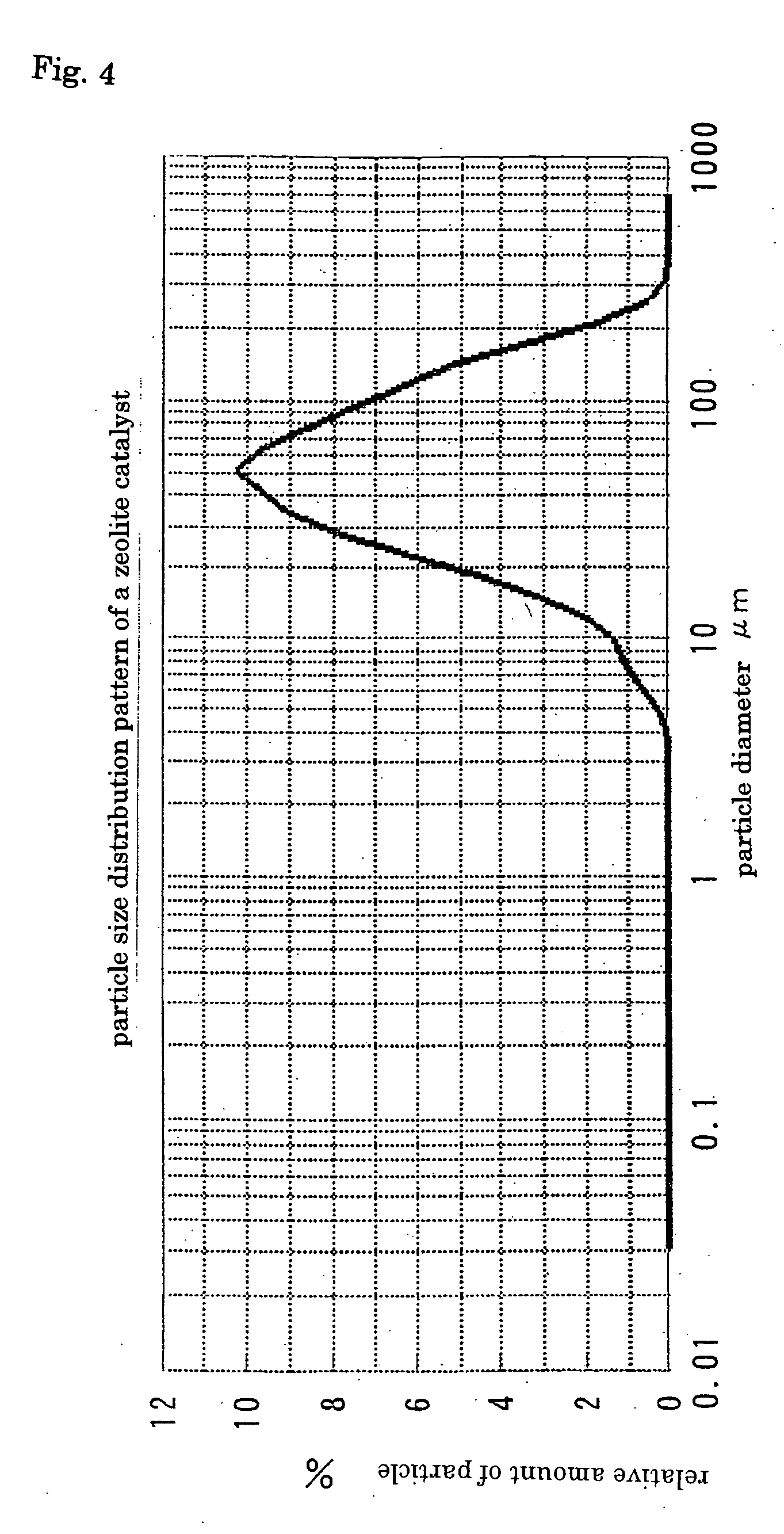Process for halogenation of benzene and benzene derivatives
a technology of benzene and benzene derivatives, which is applied in the direction of catalyst activation/preparation, physical/chemical process catalysts, halogenated hydrocarbon preparations, etc., can solve the problem that the method cannot always be allowed in the point of production costs and productivity, and the reaction time and distillation pre-treatment time are long, so as to achieve high selectivity and high yield
- Summary
- Abstract
- Description
- Claims
- Application Information
AI Technical Summary
Benefits of technology
Problems solved by technology
Method used
Image
Examples
example 1
Preparation of Fluorine-Containing L-Type Zeolite
[0087] 6.43 g of anhydrous potassium fluoride and 60 ml of distilled water were added to 10 g (absolute dry) of Tosoh's K-L-type zeolite, stirred (75° C.) for 5 hours, and filtered, and the resulting cake was dried overnight at 120° C.
example 2
Preparation of Fluorine-Containing L-Type Zeolite
[0088] 3.22 g of anhydrous potassium fluoride and 60 ml of distilled water were added to 10 g (absolute dry) of Tosoh's K-L-type zeolite, stirred (room temperature) for 10 minutes, and filtered, and the resulting cake was dried overnight at 120° C.
example 3
Chlorination with a Catalyst of Fluorine-Containing L-Type Zeolite
[0089] A 100-ml four-neck flask was equipped with a reflux condenser, a thermometer, a chlorine inlet duct, and a sampling duct. This was so designed that waste chlorine gas could be exhausted from the top of the reflux condenser and trapped in an aqueous sodium hydroxide solution. Heating it was effected in an oil bath.
[0090] 16.96 g of orthoxylene (Sigma Aldrich Japan's first class grade chemical) that had been previously dried with Molecular Sieve 4A to have a water content of 20 ppm, 60 ml of 1,2-dichloroethane (Sigma Aldrich Japan's first class grade chemical), and 3.39 g of the fluorine-containing K-L-type zeolite (from Tosoh) that had been prepared in Example 1 and calcinated at 400° C. for 1 hour and then cooled in a desiccator were put into the flask, and heated at 80° C. with nitrogen gas being introduced thereinto through the chlorine gas inlet tube. After this was heated at 80° C., the nitrogen gas was e...
PUM
| Property | Measurement | Unit |
|---|---|---|
| temperature | aaaaa | aaaaa |
| temperature | aaaaa | aaaaa |
| water content | aaaaa | aaaaa |
Abstract
Description
Claims
Application Information
 Login to View More
Login to View More - R&D
- Intellectual Property
- Life Sciences
- Materials
- Tech Scout
- Unparalleled Data Quality
- Higher Quality Content
- 60% Fewer Hallucinations
Browse by: Latest US Patents, China's latest patents, Technical Efficacy Thesaurus, Application Domain, Technology Topic, Popular Technical Reports.
© 2025 PatSnap. All rights reserved.Legal|Privacy policy|Modern Slavery Act Transparency Statement|Sitemap|About US| Contact US: help@patsnap.com



